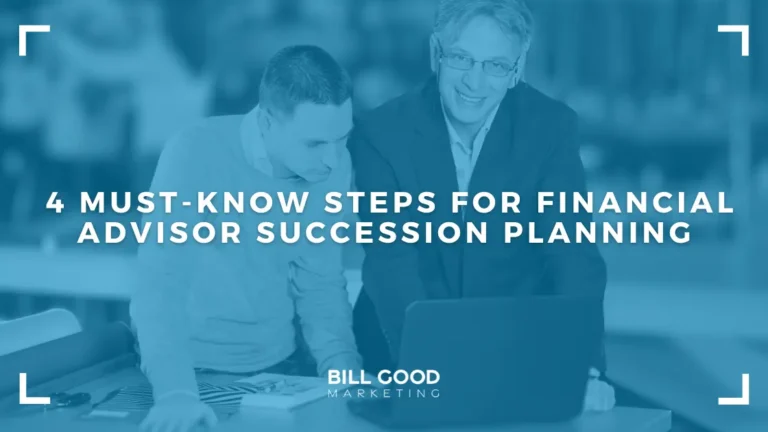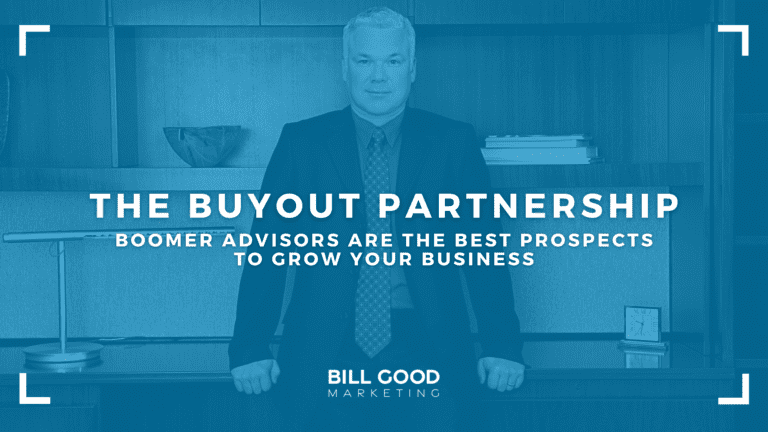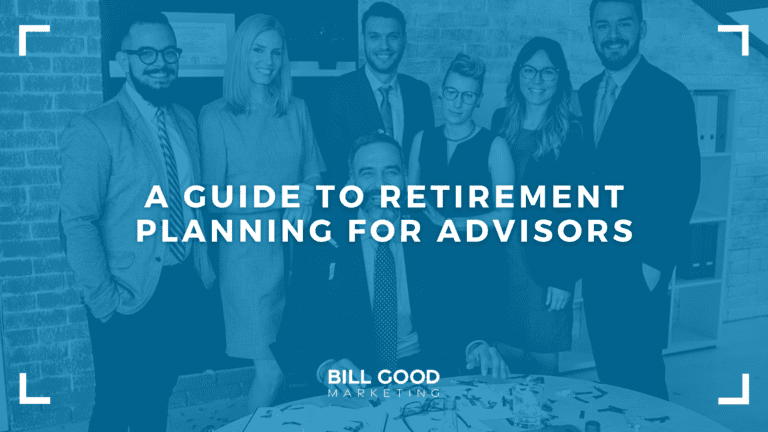Imagine spending decades of your life building something meaningful—your advisory business. Brick by brick, client by client, you’ve grown not just a book of business, but a community that trusts you. Your efforts have created a legacy of financial guidance and client relationships that can’t be summed up in numbers alone. But what happens when it’s time for you to step back?
According to a study done by Cerulli Associates – within the next 10 years, 37% of financial advisors—collectively controlling $10.4 trillion, or 40% of total industry assets—are expected to retire. That’s nearly half of the assets in the wealth management industry about to transition, leaving a gaping void if no action is taken. Yet, one in four of these advisors is unsure of their succession plan.
Think about that for a moment. Imagine the lives impacted, the trust disrupted, the wealth in limbo. Not having a clear succession plan isn’t just a personal risk—it’s a disservice to clients who’ve put their faith in you. It’s a duty to ensure that what you’ve built, brick by brick, continues to serve, to grow, and to care for those who rely on it.
Succession planning isn’t just about creating a future exit strategy.
It’s about ensuring the values, the service, and the mission you’ve built are passed on seamlessly. It’s about your legacy.
Without a proper succession plan, everything you’ve worked hard for could face turmoil. Client trust can waver, team members can feel uncertain, and your vision for the future can quickly become blurred.
For financial advisors, succession planning isn’t optional; it’s a duty to yourself, your clients, and the next generation of advisors you want to replace you.
A clear, thoughtful plan means continuity—a promise that client needs will be met, your book of business will thrive, and the hard work you put in today will pay off long after you’ve stepped away.
And, more importantly, it means providing stability for those who you’ve spent countless years alongside—your clients, your team members, and your family.
The time to start planning is now.
Because, after all, the mark of a successful financial professional isn’t just the number of assets under management —it’s about leaving behind a business that continues to shine, even in your absence.

What is Succession Planning?
Think of succession planning like planting an oak tree. It’s not about you enjoying the shade tomorrow; it’s about ensuring there’s a place for others to sit, long after you’re gone. Succession planning for financial advisors is about creating a strategy that lets your life’s work endure, even when you’re ready to step aside.
Succession planning isn’t just paperwork and valuations (although important) – it’s the art of passing on your vision, making sure that the client relationships you’ve cultivated over years in the business don’t vanish but instead grow even stronger. It’s about choosing who will carry your torch—the new advisor who will care as deeply about your clients as you do.
The decision starts with one of two options: internal succession or external transition.
An internal successor might be a rising star within your team—a younger advisor who knows your clients by name, who understands the culture and values of your firm. This option means mentoring potential successors who can continue the journey you started, keeping the DNA of your firm intact.
On the other hand, external succession means merging with another advisory firm, RIA or selling to a larger entity—a wirehouse or another advisor within your broker-dealer. This kind of succession involves bringing in someone from the outside to take over, which requires just as much care and due diligence to find the right match that aligns with your current values and culture.
Both paths have their pros and cons, but the core of any good succession plan is ensuring business continuity and client trust. The last thing you want is for your client base to feel abandoned. That’s why, whether you’re planning for an internal successor or an external transition, the focus should be on the relationships—because that’s what makes your business truly irreplaceable. And, let’s be honest, also increases the long-term value of your book.
Succession planning is the difference between an abrupt ending and a smooth transition. It’s your chance to start your retirement plans with a celebration, knowing that the business you’ve worked so hard to build will continue to serve, grow, and prosper.

4 Key Steps to Succession Planning for Financial Advisors
Let’s talk about the future—not just any future, but the future you’re designing today. Creating a succession plan is like drawing up the blueprint for the house you’ve always dreamed of. It’s about building something solid, something that lasts beyond you, and something that serves everyone who calls it home. Here’s how you do that:
1. Define Your Vision for Succession
Every great plan starts with a vision. What does the future look like for you? For your clients? For your team? Your succession plan should reflect not only your retirement plans but also your legacy. Are you looking to pass the torch to a trusted internal successor, or are you preparing for a full exit by selling to another advisory firm? Defining your goals helps to set the foundation—one that aligns with both your personal aspirations and the needs of your advisory business.
This vision isn’t just about the numbers (though those are important). It’s about values, principles, and the client relationships you’ve built. When you know exactly what you want from this transition, you’re setting the stage for a successful succession plan.
2. Identify a Successor
Imagine passing a baton in a relay race. You don’t just hand it to anyone—you hand it to someone running at your speed, in the same direction. Finding the right successor is about identifying potential successors who can uphold your vision, values, and current service models.
It might be a younger advisor already on your team—someone who’s been mentored and knows the ropes. Or perhaps it’s a family member who understands the heart of the business.
The right successor isn’t just someone who knows how to manage financial portfolios. It’s someone who can build relationships, gain client trust, and guide clients through their financial journey. It’s about preparing the next generation of advisors to not just manage but to lead.
3. Training and Development
A smooth transition isn’t about flipping a switch. It’s about a gradual handover, one where clients feel comfortable and your successor feels ready. Think of this as mentoring—not just handing over tasks but transferring wisdom. The new advisor should be equipped not only with the technical skills but also with the cultural understanding of what makes your advisory firm unique.
This means including them in day-to-day operations, introducing them to key clients while allowing them to slowly establish their own expert identity to build trust, and giving them the opportunity to learn directly from you. Mentorship is the bridge that connects your legacy with the future, ensuring that the transition process is seamless for everyone involved.
4. Financial Arrangements
Numbers matter—but not just for your clients. Valuing your business correctly is crucial for a fair transition. Whether it’s an internal buyout or an external sale, understanding the market value of your advisory business is key. This valuation ensures that the financial arrangements benefit both you and the successor, whether through seller financing, external funding, or other incentives.
The goal here is to create a win-win situation—a structure that maintains profitability and stability while also providing the resources your successor needs to thrive. After all, the true value of your business isn’t just in assets under management; it’s in the trust you’ve earned and the relationships you’ve built.

3 Common Succession Planning Challenges and How to Overcome Them
Let’s face it: succession planning isn’t easy.
It’s full of emotional hurdles, hard conversations, and uncomfortable truths. But it’s also one of the most rewarding things you can do for yourself, your clients, and your business. Overcoming these challenges is what separates the advisors who simply run their practice from those who leave a legacy.
1. Emotional Barriers for Financial Advisors
If you’re like most financial professionals, your business is more than just work—it’s your life’s passion. The idea of stepping back can be intimidating, like handing over your life’s masterpiece to someone else’s brush. There’s a sense of loss that comes with letting go. It’s normal. But the way to move forward is to realize that succession planning isn’t about stepping aside; it’s about lifting others up to continue your vision.
The key here is to frame this transition not as an ending, but as a beginning. Think of it as launching the next chapter of your legacy. By focusing on mentoring your successor, you’re ensuring that the heart of what you built continues to beat, even if it’s in someone else’s capable hands.
2. Communicating Changes to Clients
For many clients, you’re not just an advisor—you’re a trusted guide, someone who knows their hopes, fears, and financial dreams. The idea of change might make them uneasy. They might question if their needs will still be met, if the same care and dedication will be there.
The best way to overcome this challenge? Transparency. Be upfront about the succession process. Involve clients early and often. Introduce them to your successor long before any formal transition takes place. Make them feel like stakeholders in this journey, so that, instead of fearing the change, they feel like they’re a part of it.
Succession isn’t about replacing you; it’s about ensuring the same level of care, trust, and attention for years to come.
3. Navigating Financial Complexities
Beyond emotions, there’s the undeniable complexity of the numbers. Valuation, retirement planning, dealing with the stakeholders—it’s easy to get caught up in the whirlwind of details. This is where planning early makes all the difference. We recommend beginning your plans at least five years out. Even if you decide as it gets closer that you want to push it out a little further, having your plans in place early is a very good thing.
Start by understanding the market value of your practice, factoring in all the elements that contribute to it, from client relationships to your book of business.
Don’t hesitate to bring in professionals who specialize in succession planning. They can help guide the valuation process and work through the legal and financial intricacies. Remember, this isn’t a solo venture; this is the time to lean on experts who can help bring your vision to life.
Facing these challenges head-on isn’t just about making the transition smoother; it’s about ensuring your clients, your team, and your legacy are taken care of. Because, at the end of the day, a well-planned succession is a gift—to yourself, your clients, and to the next generation.

4 Best Practices for a Successful Transition
Planning a succession isn’t just about the end; it’s about how you choose to journey through this transition. The steps you take today will shape how smoothly tomorrow unfolds, not just for you, but for your clients, your successor, and your firm. Let’s talk about the best practices that will make all the difference.
1. Start Early and Update Regularly
The best time to plant a tree was twenty years ago. The second-best time is today. Succession planning works the same way. It’s never too early to start. Even if retirement seems far off or you feel invincible, building a roadmap now ensures that when the time comes, you’re ready. Starting early gives you time to find the right successor, to build that relationship, and to gradually transition client trust. That’s why we say, “at least” five years out.
But it’s not just about starting—it’s about updating. Circumstances change, your successor might evolve, and market dynamics may shift. A succession plan is a living document, not a one-time event. It should grow alongside your advisory business, adjusting for new insights and opportunities.
2. Transparent Communication with Clients
Clients deserve honesty. They’ve chosen you not just for your financial acumen, but because they trust you. When it comes to succession, don’t treat it like a secret. Talk to your clients, share your vision, and introduce them to the next generation of advisors that will serve them. Show them that this isn’t a hand-off, but rather a well-thought-out partnership that will continue to prioritize their needs.
By bringing clients into the conversation, you’re not just informing them—you’re empowering them. You’re showing them that their financial future is not only secure but is transitioning into capable hands. This kind of open dialogue builds deeper relationships and ensures that client loyalty extends beyond your retirement.
3. Seek Professional Guidance
No one climbs Everest without a guide. Succession planning is no different. It’s a complex journey with twists and turns—financial planning, business valuation, legal details—that can easily overwhelm. But here’s the good news: you don’t have to do it alone.
At Bill Good Marketing we’ve helped hundreds of financial services professionals just like you create succession plans that work, and we’ve seen it all—family transitions, internal buyouts, even those tricky mergers. We know what it takes to get it right. Having someone who’s walked this path before can make a world of difference, turning what feels like an intimidating project into a clear, manageable process.
Think of it this way: you’ve spent years being the guide for your clients, helping them navigate their financial lives. Now, it’s your turn to lean on someone to help guide you through this important transition. The right help ensures that every detail is handled with care. That allows you to enjoy the journey toward the next chapter of your life with peace of mind.
4. Make Mentorship a Priority
A smooth transition isn’t about waving goodbye. It’s about building bridges. Mentorship plays a crucial role in creating those bridges between your experience and the energy of your successor. Spend time mentoring the younger advisors who will carry on your mission. Involve them in client meetings, strategic decisions, and the day-to-day realities of the business. Have them document what they are learning so you can check it. The more they understand your approach, the better they’ll be at embodying it.
Mentorship is about transferring values, creating leaders, and setting up your successor to successfully carry on the business’ brand you’ve built. It’s about sharing not just knowledge, but wisdom—so that the transition feels less like an ending, and more like a natural evolution.

Learn How to Build a Succession Plan with Bill Good Marketing
Succession planning isn’t about endings—it’s about beginnings. It’s about building the bridge from what you’ve created to what comes next. You’ve spent years guiding your clients through the complexities of wealth management, helping them make decisions that secure their future. Now, it’s time to make sure your future is just as secure.
The truth is that the best time to start the succession planning process is today.
Not because it’s urgent, but because your legacy is worth it.
As a business owner (whether you’re an RIA, or an investment advisor at a larger firm), the work you do isn’t just about numbers—it’s about people. It’s about your client base and the trust they place in you. It’s about ensuring retention of the relationships you’ve nurtured. It’s about continued growth, even when you step back.
At Bill Good Marketing, we’ve seen what works—and what doesn’t. We’ve helped hundreds of advisors in the financial services industry craft succession plans that don’t just feel right but actually work.
Plans that don’t just tick boxes, but ensure the values, vision, and care you’ve built into your practice live on. Because the goal isn’t just to hand off your business, it’s to pass on your passion.
If you’re ready to think about what comes next, we’re here to help. We’ve walked this path with so many others, helping them not just plan for the future, but build it. Let us be part of your journey—let’s make sure your legacy isn’t just remembered, but continues to make an impact, long into the future.
Reach out. Let’s build that bridge together.
Take a Deeper Dive into Succession Planning for Financial Advisors
If you’re looking for more information about building a future that lasts, there’s no better time to dive deeper.
We have just the resource for you.
Our on-demand webinar, “Streamline Succession Planning: The Easiest Way to Give Your Clients Peace of Mind and Yourself Too!”, features our Sr. VP of Consulting, Matt Hicken, and our Sr. VP of Coaching, Tony Parmenter. Both have spent over 20 years coaching financial advisors through successful transitions—they’ve seen what works and more importantly what doesn’t, and they’re here to share their insights with you.
In this webinar, they cover the essentials:
- The importance of succession planning in securing business continuity, retaining top talent, and maintaining client retention.
- How to develop a strategic plan for identifying and mentoring high-potential employees to fill crucial leadership roles.
- The necessity of creating a job description for each key position—outlining the required skill sets, competencies, and what makes the role indispensable.
- And, of course, much, much more.
This on-demand session is designed to help you think big while getting practical guidance on succession planning that aligns with your vision.
Succession planning isn’t just a buzzword—it’s the key to ensuring business continuity, to knowing that the relationships you’ve nurtured are in good hands, and to giving yourself the peace of mind that you deserve.
Watch the webinar today and take an important step for your business, your clients, and your peace of mind.
About the Author

Andrew D. White is the Director of Marketing at Bill Good Marketing, a firm with over 45 years of experience helping financial advisors scale their businesses. With deep expertise in advisor marketing, client acquisition, and retention strategies, Andrew specializes in creating high-impact campaigns that drive measurable results. His insights are grounded in real-world experience, working alongside top-performing advisors to refine prospecting, branding, and practice management strategies.




